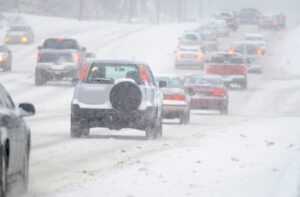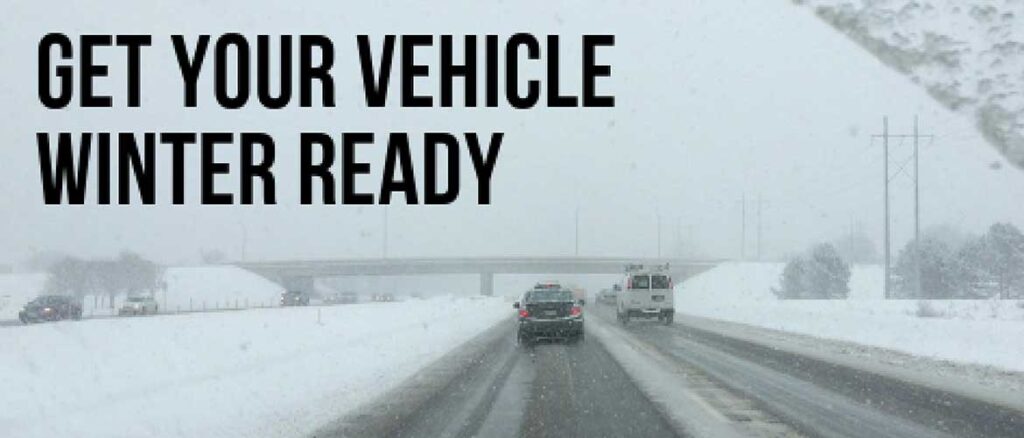Get your vehicle ready for winter and ensure a safe and smooth driving experience. Prepare for the cold weather by checking your tires, battery, fluids, and brakes. Don’t wait until it’s too late! Visit buyfromnorm.ca for all your winter vehicle needs.
Essential Winter Driving Tips for Safe Navigation on Slippery Roads
Winter is a beautiful season, with its snow-covered landscapes and cozy nights by the fire. However, it also brings its fair share of challenges, especially when it comes to driving. Slippery roads, reduced visibility, and unpredictable weather conditions can make winter driving a daunting task. But fear not! With a few essential winter driving tips, you can navigate those slippery roads safely and confidently.
First and foremost, it’s crucial to get your vehicle ready for winter. This means ensuring that your tires are in good condition and properly inflated. Winter tires are specifically designed to provide better traction on icy and snowy roads, so consider investing in a set if you live in an area with harsh winters. Additionally, make sure your windshield wipers are in good working order and replace them if necessary. Clear visibility is essential for safe driving, especially during winter when snow and sleet can obstruct your view.
Another important aspect of preparing your vehicle for winter is checking your battery. Cold temperatures can significantly reduce your battery’s capacity, so it’s essential to have it tested and replaced if needed. The last thing you want is to be stranded in the middle of nowhere with a dead battery. Additionally, keep an eye on your vehicle’s fluids, especially antifreeze. Antifreeze helps prevent your engine from freezing, so make sure it’s at the appropriate level and mix.
Once your vehicle is winter-ready, it’s time to focus on your driving techniques. One of the most crucial tips for safe winter driving is to slow down. Reduced traction on slippery roads means that it takes longer to stop, so give yourself plenty of time and space to react to any potential hazards. Avoid sudden movements, such as hard braking or accelerating, as they can cause your vehicle to skid. Instead, maintain a steady and controlled speed, especially when going uphill or downhill.
Another essential winter driving tip is to increase your following distance. The normal rule of thumb is to keep a three-second distance between you and the vehicle in front of you. However, during winter, it’s recommended to double that distance to allow for a longer stopping time. This extra space can be a lifesaver if the vehicle in front of you suddenly brakes or loses control.
In addition to adjusting your driving techniques, it’s also crucial to be prepared for emergencies. Keep a winter survival kit in your vehicle, including items such as a blanket, flashlight, extra warm clothing, and non-perishable snacks. It’s also a good idea to have a shovel, ice scraper, and sand or kitty litter in case you get stuck in the snow. Being prepared can make a significant difference in case of an unexpected situation.
Lastly, always stay informed about the weather conditions before heading out. Check the local weather forecast and road conditions to ensure you’re aware of any potential hazards or advisories. If the conditions are severe, consider postponing your trip or finding an alternative route. Your safety should always be the top priority.
In conclusion, winter driving can be challenging, but with the right preparation and driving techniques, you can navigate those slippery roads safely. Remember to get your vehicle ready for winter, adjust your driving techniques, be prepared for emergencies, and stay informed about the weather conditions. By following these essential winter driving tips, you’ll be able to enjoy the beauty of the season while staying safe on the road.
The Importance of Winter Tires for Enhanced Vehicle Performance in Cold Weather

Winter is just around the corner, and it’s time to start thinking about getting your vehicle ready for the cold weather. One important aspect of winter preparation is ensuring that your vehicle is equipped with the right tires. Winter tires are specifically designed to provide enhanced performance in cold weather conditions, making them a crucial investment for anyone living in an area with harsh winters.
So, why are winter tires so important? Well, it all comes down to their unique design and composition. Unlike all-season tires, winter tires are made with a special rubber compound that remains flexible even in freezing temperatures. This flexibility allows the tires to maintain optimal traction on icy and snowy roads, reducing the risk of skidding or sliding.
In addition to their special rubber compound, winter tires also feature a tread pattern that is specifically designed to grip the road in winter conditions. The deep grooves and sipes in the tread help to channel snow, slush, and water away from the tire’s surface, allowing for better contact with the road. This improved contact translates into better handling, braking, and overall performance in cold weather.
But it’s not just about performance – winter tires also play a crucial role in safety. When temperatures drop below 7 degrees Celsius (45 degrees Fahrenheit), the rubber in all-season tires hardens, reducing their ability to grip the road. Winter tires, on the other hand, remain pliable and provide better traction, even in sub-zero temperatures. This increased traction can make all the difference when it comes to avoiding accidents and staying safe on winter roads.
Now that we understand the importance of winter tires, let’s talk about how to choose the right ones for your vehicle. When shopping for winter tires, it’s essential to look for the “Three-Peak Mountain Snowflake” symbol on the sidewall. This symbol indicates that the tire has met specific performance standards for snow traction. Additionally, you’ll want to consider the size and type of tire that is recommended for your vehicle. Consulting your vehicle’s owner’s manual or speaking with a tire professional can help you make the right choice.
Once you’ve selected the right winter tires for your vehicle, it’s important to have them installed before the first snowfall. Winter tires should be installed on all four wheels to ensure balanced handling and traction. It’s also a good idea to have your tires inspected and rotated regularly throughout the winter season to ensure optimal performance.
In conclusion, winter tires are a crucial investment for anyone living in an area with harsh winters. Their unique design and composition allow for enhanced performance, better handling, and increased safety in cold weather conditions. By choosing the right winter tires and having them installed before the first snowfall, you can ensure that your vehicle is ready to tackle whatever winter throws its way. So, don’t wait – start preparing your vehicle for winter today!
How to Winterize Your Vehicle for Optimal Functionality and Safety

Winter is just around the corner, and with it comes the need to prepare our vehicles for the harsh conditions that lie ahead. Winterizing your vehicle is essential for optimal functionality and safety during the colder months. By taking a few simple steps, you can ensure that your vehicle is ready to tackle the challenges that winter brings.
One of the first things you should do when winterizing your vehicle is to check your tires. Cold temperatures can cause the air pressure in your tires to drop, so it’s important to make sure they are properly inflated. Underinflated tires can reduce traction and increase the risk of accidents on slippery roads. Additionally, consider switching to winter tires for better grip on icy and snowy surfaces.
Next, it’s crucial to check your vehicle’s battery. Cold weather can be tough on batteries, and a weak battery may struggle to start your car in freezing temperatures. Have your battery tested to ensure it’s in good condition and replace it if necessary. It’s also a good idea to clean any corrosion from the battery terminals and make sure they are tightly connected.
Another important aspect of winterizing your vehicle is checking your antifreeze levels. Antifreeze, also known as coolant, helps regulate your engine’s temperature and prevents it from freezing. Make sure your antifreeze levels are sufficient and that the mixture is appropriate for the winter temperatures in your area. If needed, top up or replace your antifreeze to ensure your engine stays protected.
In addition to antifreeze, it’s essential to check your vehicle’s oil and other fluids. Cold weather can cause oil to thicken, making it harder for your engine to start. Consider switching to a winter-grade oil that is designed to flow more easily in low temperatures. It’s also a good idea to check your windshield washer fluid and replace it with a winter formula that won’t freeze.
Don’t forget about your windshield wipers! Visibility is crucial during winter driving, so make sure your wiper blades are in good condition and replace them if necessary. Consider using winter wiper blades that are designed to handle snow and ice more effectively. It’s also a good idea to keep an extra bottle of windshield washer fluid in your vehicle in case you run out during a winter storm.
Lastly, take the time to thoroughly clean your vehicle, both inside and out. Winter weather can be harsh on your vehicle’s exterior, so giving it a good wash and wax can help protect the paint. Cleaning the interior is also important, as salt and dirt from winter roads can damage carpets and upholstery. Consider using rubber floor mats to protect your vehicle’s interior from moisture and salt.
By following these simple steps, you can ensure that your vehicle is ready to take on the challenges of winter. Winterizing your vehicle not only improves its functionality but also enhances your safety on the road. So, take the time to prepare your vehicle for the colder months ahead and enjoy a worry-free winter driving experience. Stay safe and happy travels!




